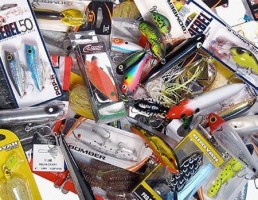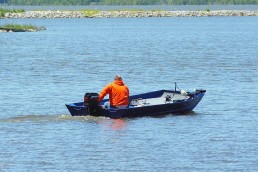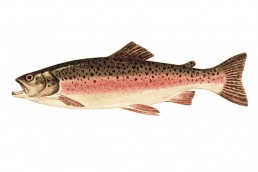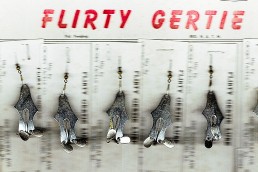Taming Your Tackle for the Coming Season
SHARE THIS POST
It is a cold, cloudy winter day as I peer out the window at Lake of the Ozarks. The redeeming feature to an otherwise dreary scene is watching eagles that occasionally spar over shad frozen in the ice.
However, the prospects of an entertaining fishing day are great.
Fortunately, there are a number of important but pleasant indoor activities to help pass the time. Rods, reels, and lures need to be inventoried, inspected, organized, lubricated and repaired. It is a perfect and productive way to spend a few days.
The first order of business is to examine rods for damaged guides, broken hook holders and to clean the cork handles as needed. Sweaty hands create a build-up on cork handles, making them slippery. Contrary to popular belief, you can clean cork handles using a damp cloth and a mild detergent.
Clean and dry the handles, looking for broken or loose pieces of cork. Badly damaged handles are best left to a qualified technician. One source for this work is Outdoor World Rod & Reel Repair in Springfield, Mo. Anglers wanting to do their own repairs can order parts from Jann’s Netcraft.
Even very expensive reels need regular maintenance, including cleaning, lubrication and spooling new line on. Some anglers are very experienced at performing regular cleaning and lubrication tasks on their reels; others would be wise to leave this task to professionals. Contact local bait and tackle shops for repair suggestions or send the reel to a repair center.
Spool fresh line on the reel then put a date and line test sticker on the bottom of the reel seat. Speaking of dates, it is a good idea to write the purchase date on spools of line, especially large spools where the line might last a year or more.
Now is the perfect time to inventory lures and replace hooks. During the inventory, consider discarding, donating or selling lures that have not produced fish. They are occupying space needed to store tried and true “confidence” lures.
Carefully check the remaining lures for defective or worn split rings and hooks. Replace as needed, and sharpen all your hooks. Even some new hooks may need a quick touch with a hook stone.
After doing inventory, make a list of lures you need to replenish. Then, make a “wish list” of new lures to try out. Try categorizing your list by brand and model, color, depth, tactic, etc.
Are you enjoying this post?
You can be among the first to get the latest info on where to go, what to use and how to use it!
Now comes the fun part—shopping.
This is no time to shortchange yourself by only ordering from a catalog. Walk through the aisles; see the colors and styles in person.
Watch videos that show tips on how to use certain lures, and get recommendations from store associates on style, type, color, methods, and on which seasons to use different lures. After all, they want you to catch fish using their suggestions and products; your success brings you back for more products and ideas.
As you walk the aisles, remember the displays show the products in ways to attract buyers. Each lure has a special allure, no pun intended. Maybe it has a new kind of finish, super sharp hooks, a special wiggle, or lately, has imbedded electronics to help “call” fish.
Tournament pro’s Gary Klein and Kevin VanDam often mention that they view their lures as “tools” to catch fish. Each has a specific purpose, much like a screwdriver or pair of pliers.
You would not walk down the aisle of a hardware store buying a dozen Phillips-head and flat-bladed screwdrivers. Nor would you buy six new hammers just because they are great looking models.
Prudent shoppers make purchases based on requirements for specific types, sizes, or characteristics, and not on impulse because of a color or because an industry pro has won something using that particular tool.
Try making a list of your favorite lakes, species and the seasons you plan to fish each. Based on your experience—or that of others—compile a requirements list. Now it is a simple matter of looking at your inventory and preparing a shopping list based on needs. Using this list will help you stay focused and avoid (too much) impulse shopping. And, it saves money that could be used for other fishing expenses.
Anglers also might consider trying a few new lures with some planning. Maybe some specific skill or technique needs to be refined, or maybe fishing a new lake is in the plan this year.
Winter is a great time to repair, inventory and replenish tackle. Completing these tasks in an orderly fashion will save money and tame your tackle box for the upcoming season.
MWO
SHARE THIS POST
Did you enjoy this post?
You can be among the first to get the latest info on where to go, what to use and how to use it!
Darrell Taylor
Darrell Taylor has fished for more than 65 years. During the past 25 years, Taylor has generated more than 2,000 published articles, columns and fishing reports. His writings received 14 peer-level awards from outdoor writer organizations, including the Association of Great Lakes Outdoor Writers “Excellence in Craft” Golden Glow Award, their highest recognition.




